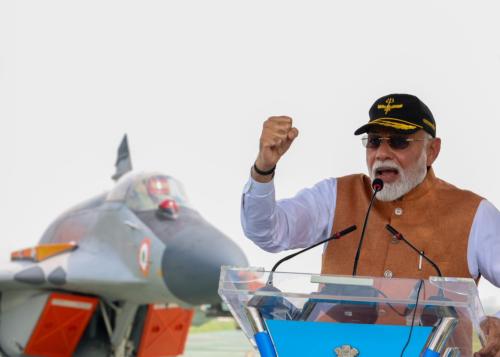Introduction
Talking with insurgents is often a necessary first step toward defeating them or reaching an acceptable compromise. These talks must often be done even as insurgents shoot at U.S. soldiers, and they in turn, shoot at them. Iraq represents perhaps the most recent and notable case where diplomacy triumphed: U.S. efforts to reach out to Iraqi Sunni tribal groups, many of which were linked to various insurgent organizations, eventually paid vast dividends as these tribes ‘‘flipped’’ and began to work with the coalition against al Qaeda in Iraq.1 In Shi‘a areas, both direct and indirect talks helped facilitate a ceasefire that has done much to keep Iraq’s fragile peace intact.
Not surprisingly, U.S. policymakers have looked to negotiations as a possible answer to the other major counterinsurgency challenge facing the country today, namely the Afghan insurgency against the Karzai government. Like the Iraqi insurgents, the Afghan insurgency is fractious, consisting of six main groups, most of which have divisions within them that could be exploited to convince some insurgents to abandon the overall insurgency and perhaps others to even join against their former allies. Unlike the Iraqi insurgents, however, the Afghan insurgency enjoys considerable support from a neighboring state, Pakistan.
Yet, talks are not cheap. They often fail and can even backfire. Talks provide legitimacy to the other side, a concession that some insurgent groups desperately seek. Talks may discredit those who have long called for peace, rewarding the use of violence. At times, cynical insurgent groups simply use the lull in fighting to rearm and regroup, becoming more deadly as a result of the negotiations. When done unilaterally, talks may also anger allies, who may be unable to negotiate for political reasons.2 Moreover, talks and the use of force usually go together rather than being seen as alternatives. As a result, insurgent groups are more likely to negotiate if they believe they have little chance of success on the battlefield.
There are indeed costs involved when engaging with insurgents. Some successful attempts, however, indicate that sometimes the advantages may outweigh the costs.3 Can the lessons drawn from the successes in the past be applied in Afghanistan? If so, what are the consequences for Afghanistan and U.S. counterinsurgency strategy?
The Brookings Institution is committed to quality, independence, and impact.
We are supported by a diverse array of funders. In line with our values and policies, each Brookings publication represents the sole views of its author(s).



Commentary
Talking with Insurgents: A Guide for the Perplexed
March 24, 2009